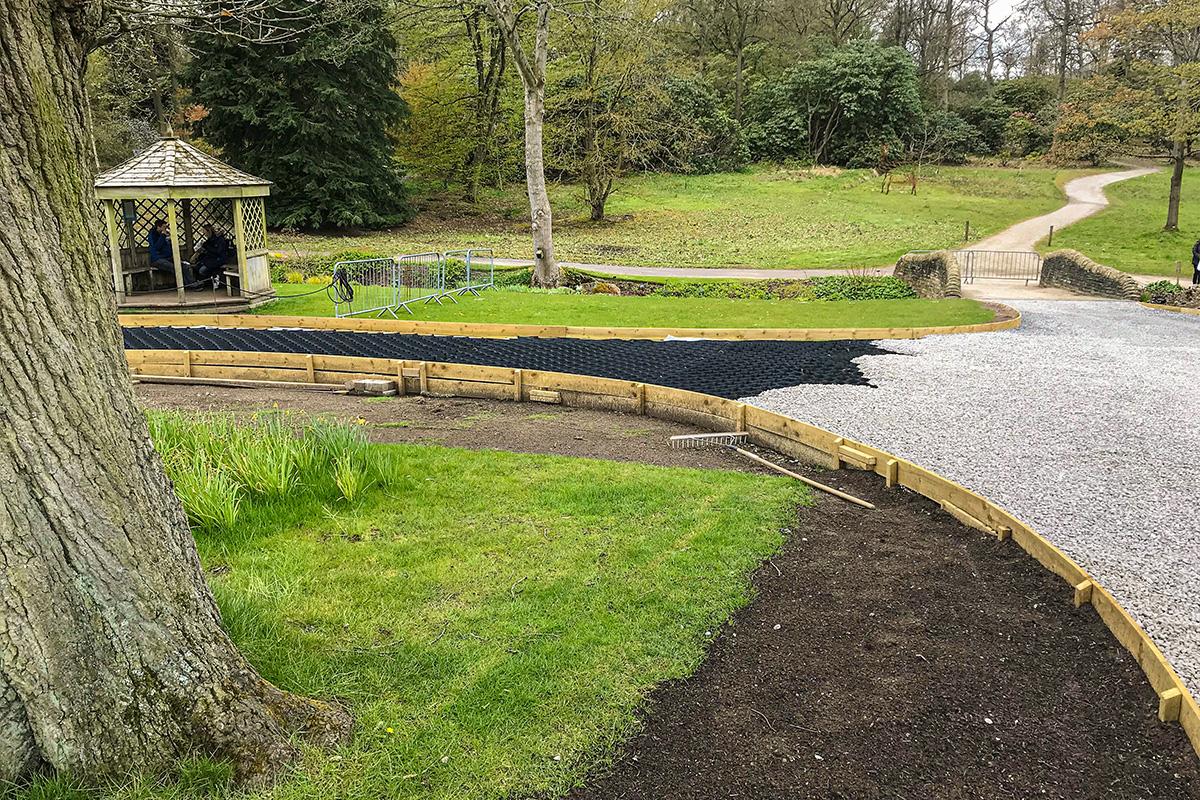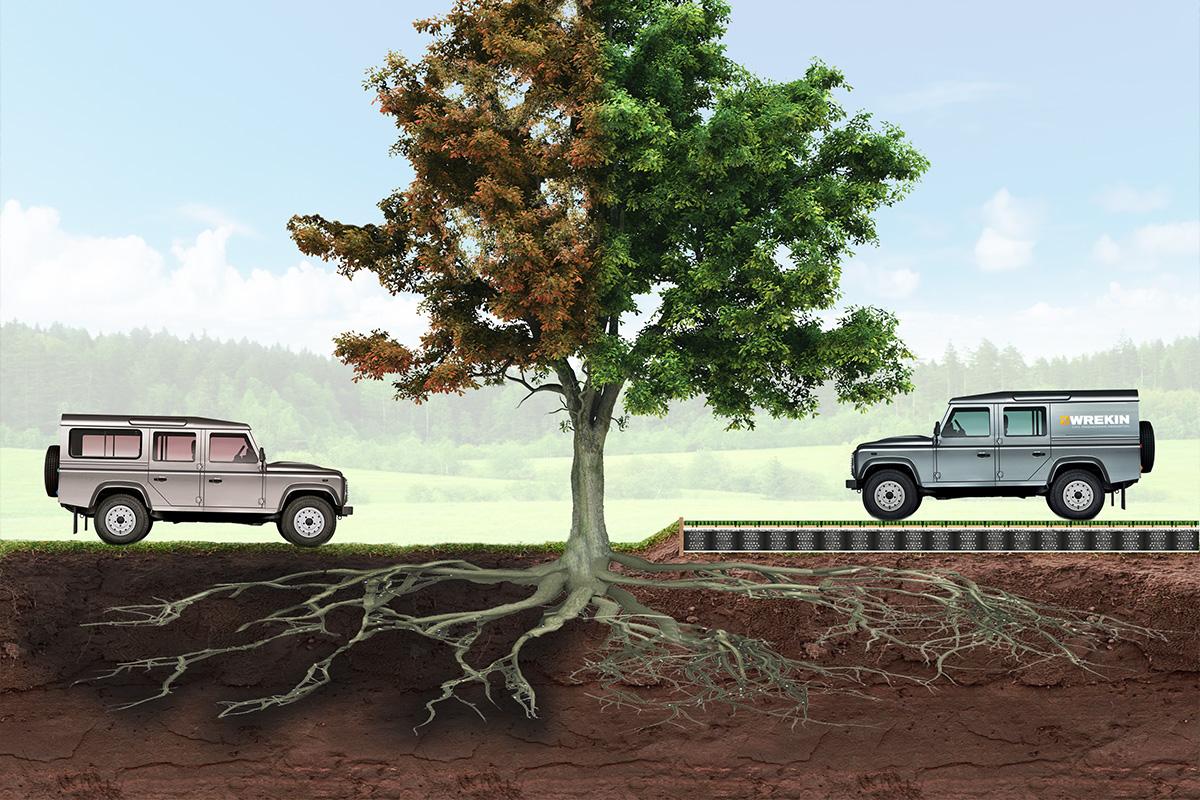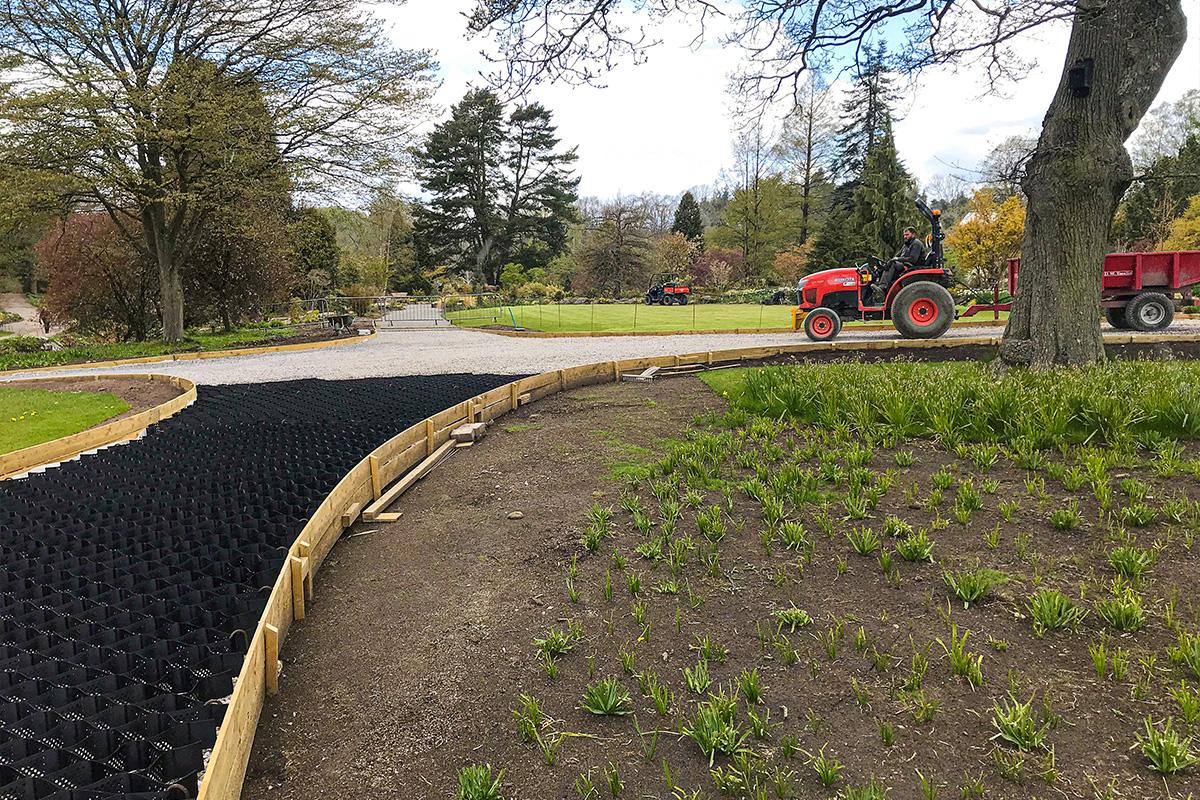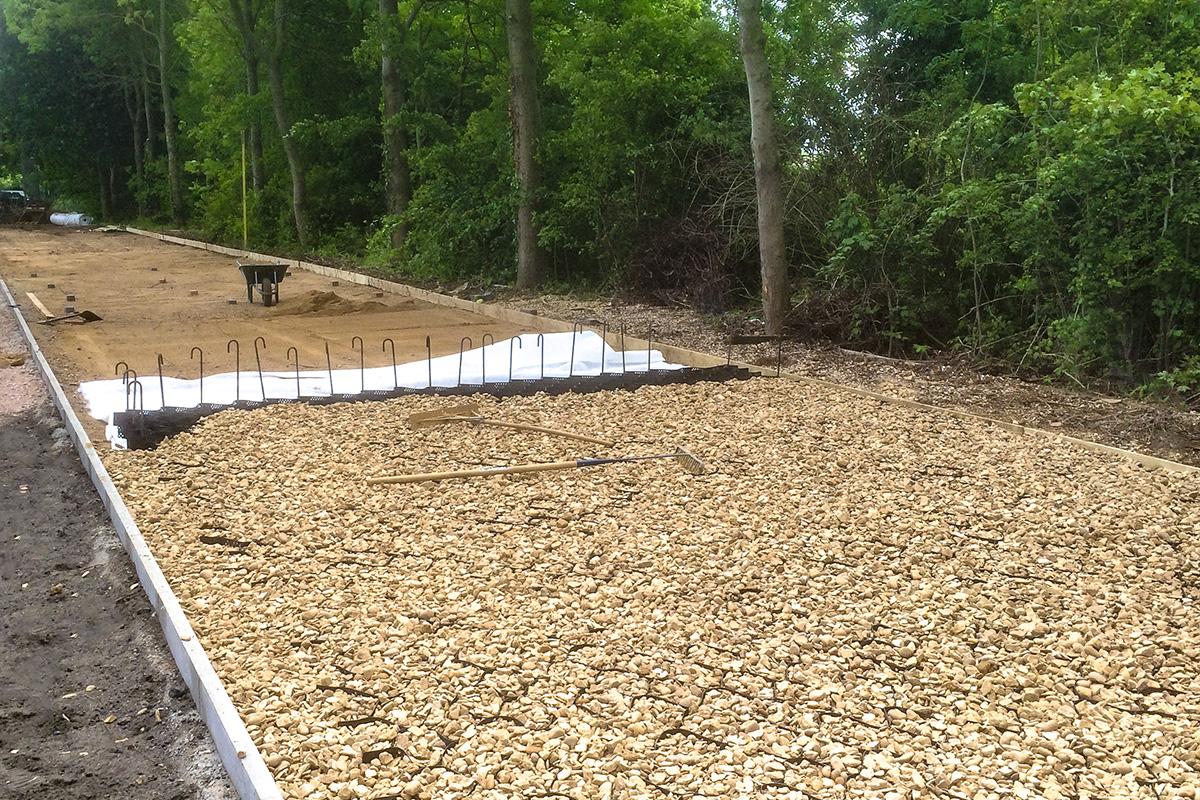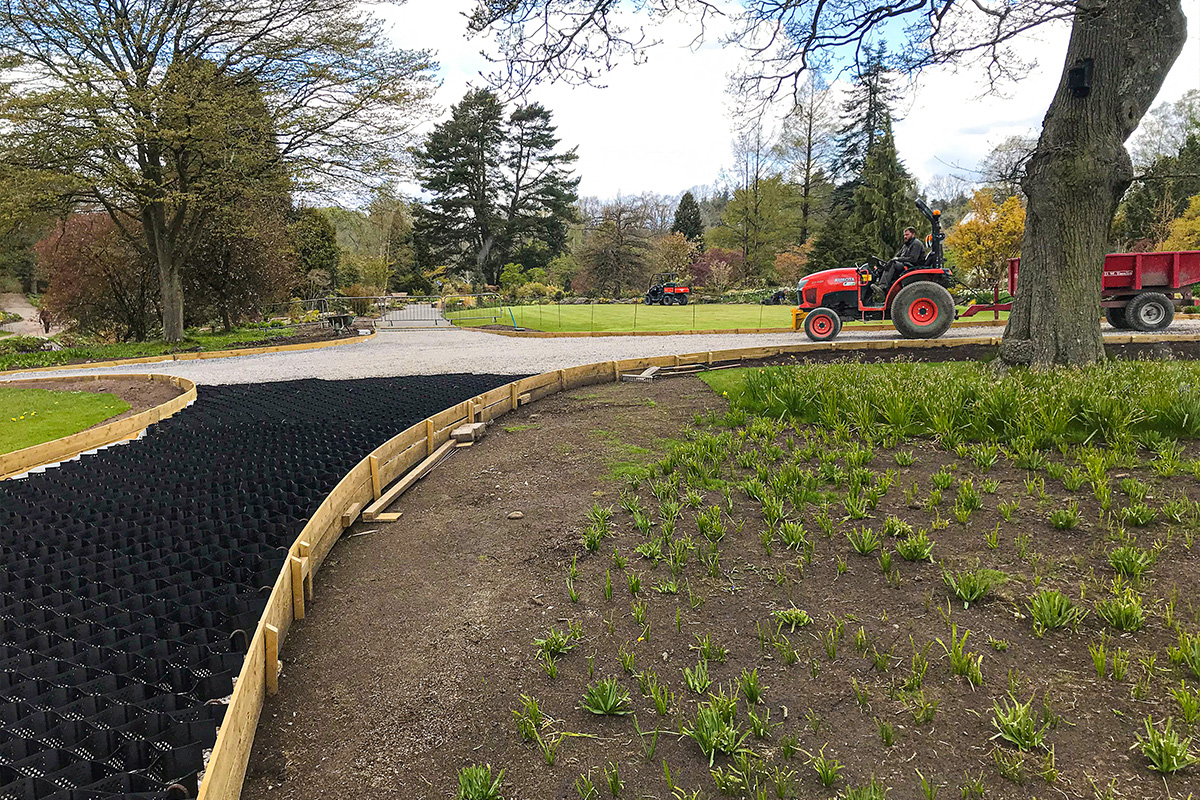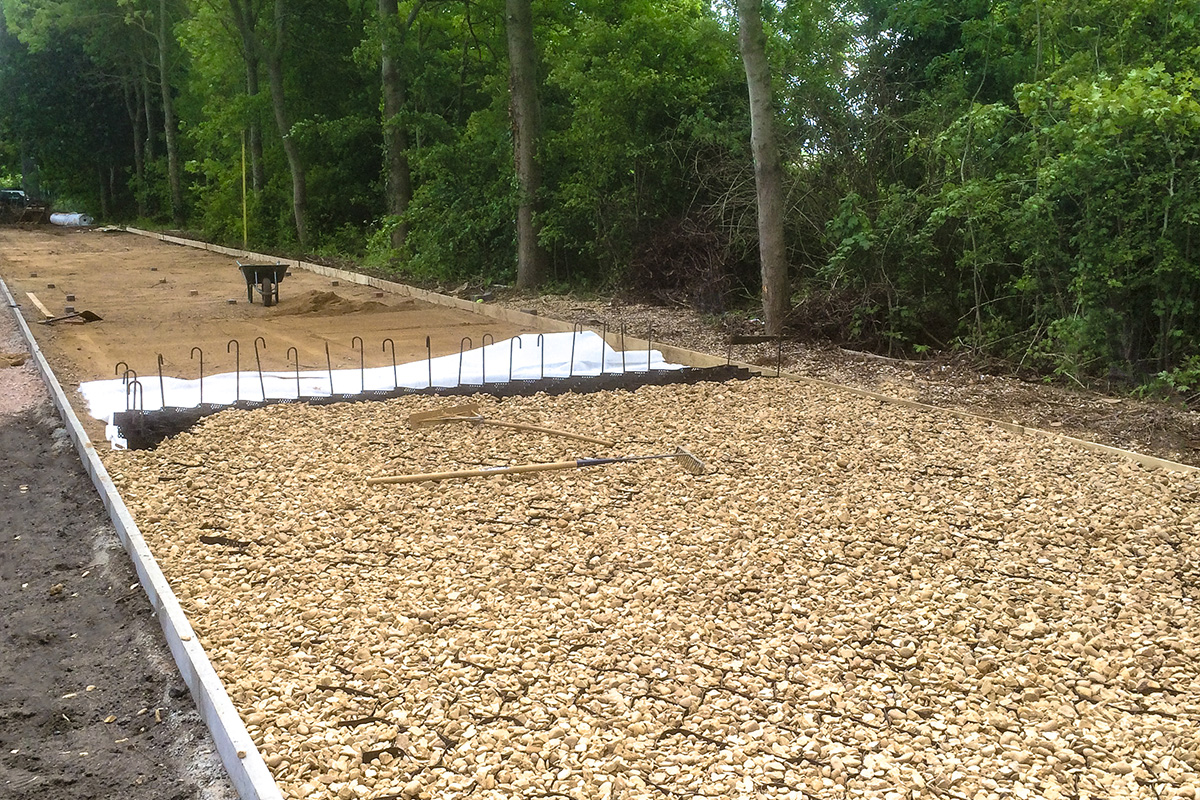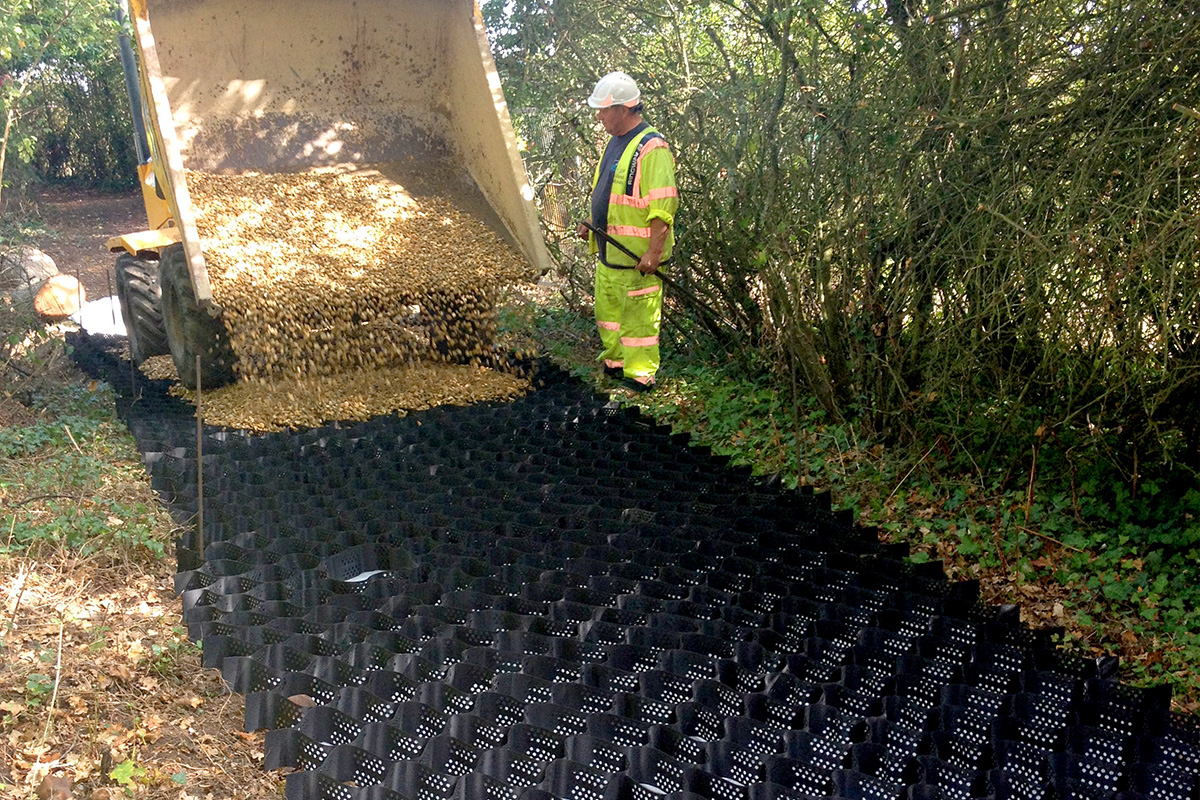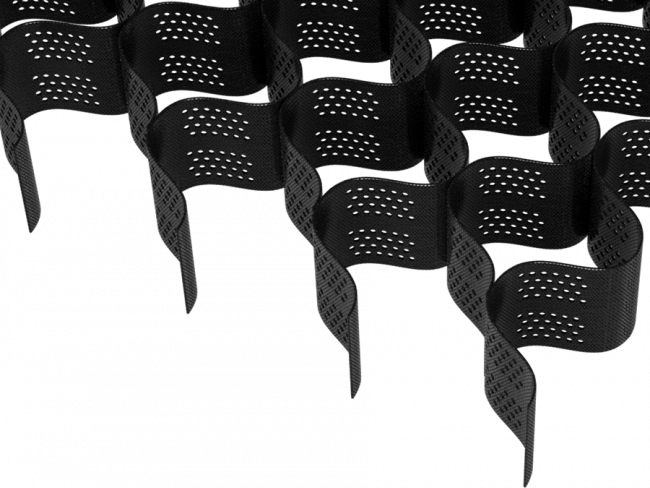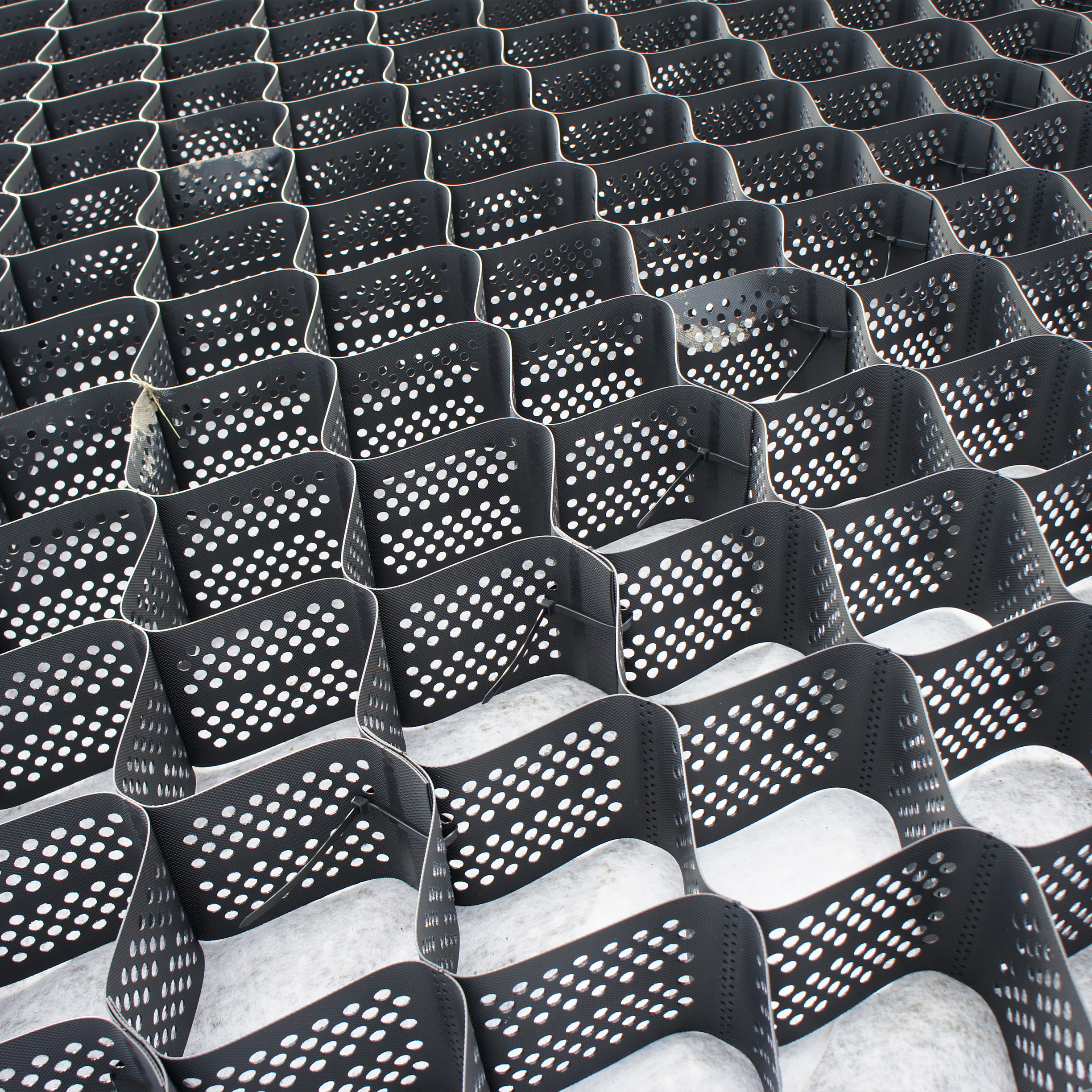
Blog
The Role of Geosynthetics in Tree Root Protection
17 July 2024
Development zones, residential areas, and public spaces such as paths and parks face the challenge of balancing growth with nature conservation. This is where geosynthetics, particularly geocells, come into play, offering a harmonious solution that prioritises the protection of tree roots. Understanding the Pressure on Tree RootsThe roots of a tree are not just anchors but vital conduits for water and nutrients. When the integrity of this system is compromised by construction activities, the health of the tree is at risk. Compaction, settlement, and physical damage can all lead to a decline in tree vitality, making root protection a key consideration in any development project. In response to these threats, geosynthetics have emerged as an effective solution. Geocells: Protection for the RootsWhen it comes to safeguarding tree roots, geocells offer an innovative solution. These three-dimensional cells are strategically placed over the area in question and filled with stones or other permeable materials. This creates a stable, composite matrix that supports the even distribution of traffic weight, thus preventing undue stress on the roots below. Geocells are available in a range of cell depths, making them ideal for a variety of uses including reinforcement, protection and erosion control. ProtectaWeb: The Balance Between Access and ConservationGeoworks' range of geocells is called ProtectaWeb, which embodies our commitment to cost-effective and environmentally sensitive solutions. It's a proven method for constructing access routes or parking areas close to trees without causing them undue stress. By reducing the amount of materials needed for stability and protection, ProtectaWeb saves time and money and preserves the delicate balance between human activities and natural preservation. THE STEP-BY-STEP PROCESS FOR INSTALLATION1. Assessment of the Site: A thorough analysis of the location is critical before any geocell installation. This includes identifying the root protection area and establishing the extent to which the construction will impact it. 2. Preparation of the Ground: Once the area is earmarked, the ground is prepared with minimal disturbance to the soil. This preparation may involve carefully removing any existing vegetation or slightly levelling the surface. 3. Geotextile Protection Layer: A key addition at this stage of installation is a suitable geotextile for the purpose of puncture resistance, oil containment, and reinforcement. We strongly recommend our MultiTrack SNW40 nonwoven geotextile. 4. Rolling Out the Geocells: ProtectaWeb geocells are then expanded across the prepared area. Available in four cell depths, they are chosen based on the specific requirements of the site, ensuring optimal protection and stability. 5. Infilling the Cells: The next step involves filling the geocells with a chosen material. This could be soil, gravel, or a mix, depending on the intended use and the necessary permeability for water and nutrients. 6. Finalizing the Surface: The infilled geocells create a semi-rigid foundation that is both stable and porous. This structure allows for the construction of access routes or parking spaces while maintaining a healthy environment for the tree roots below. The Logic of Choosing GeosyntheticsWith ProtectaWeb at the forefront, Geoworks continues to offer solutions that respect the environment and enhance project outcomes. Our range has been meticulously developed to meet the dual demands of accessibility and conservation, ensuring that our green giants continue to thrive alongside urban development. In conclusion, integrating geosynthetics into construction and development projects represents a significant step forward in tree root protection. As we navigate the complexities of growth and sustainability, Geoworks stands ready to provide the expertise and quality solutions needed to protect our precious trees for generations to come. For more information on how our geosynthetic solutions can aid your next project, check out the links below. |



